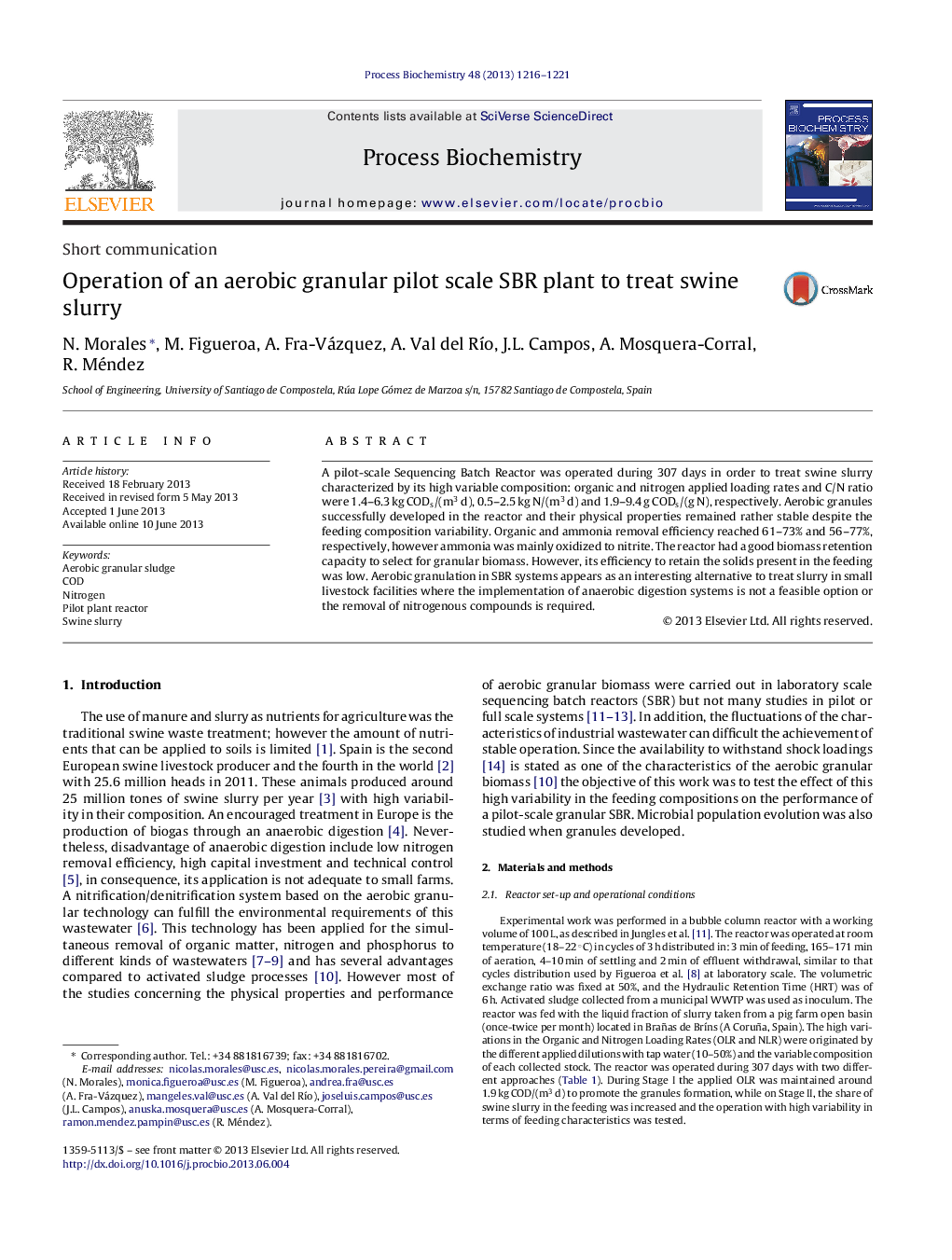| Article ID | Journal | Published Year | Pages | File Type |
|---|---|---|---|---|
| 10235796 | Process Biochemistry | 2013 | 6 Pages |
Abstract
A pilot-scale Sequencing Batch Reactor was operated during 307 days in order to treat swine slurry characterized by its high variable composition: organic and nitrogen applied loading rates and C/N ratio were 1.4-6.3 kg CODs/(m3 d), 0.5-2.5 kg N/(m3 d) and 1.9-9.4 g CODs/(g N), respectively. Aerobic granules successfully developed in the reactor and their physical properties remained rather stable despite the feeding composition variability. Organic and ammonia removal efficiency reached 61-73% and 56-77%, respectively, however ammonia was mainly oxidized to nitrite. The reactor had a good biomass retention capacity to select for granular biomass. However, its efficiency to retain the solids present in the feeding was low. Aerobic granulation in SBR systems appears as an interesting alternative to treat slurry in small livestock facilities where the implementation of anaerobic digestion systems is not a feasible option or the removal of nitrogenous compounds is required.
Related Topics
Physical Sciences and Engineering
Chemical Engineering
Bioengineering
Authors
N. Morales, M. Figueroa, A. Fra-Vázquez, A. Val del RÃo, J.L. Campos, A. Mosquera-Corral, R. Méndez,
